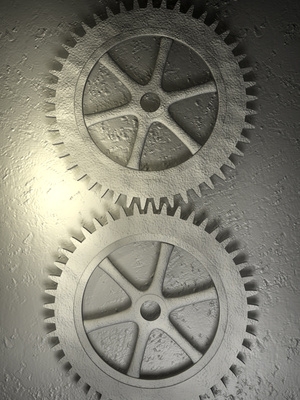
Spur and helical gears are two different types of mechanical gears. A spur gear is circular and has its teeth pointing straight out from the center. A helical gear is also circular, but its teeth are instead cast at an angle forming a spiral down the gear. There are fundamental differences in their respective designs that would make one more suitable than the other for a given task, and because of these differences the gears are not interchangable in the same machine.
Spur gears are more efficient than helical gears. Helical gears are less efficient because they have more teeth touching when two gears are connected, leading to increased friction and increasing energy lost to heat.
Spur gears cost less to manufacture than helical gears. The design of a spur gear is simpler and easier to create than a helical gear, leading to a decreased cost of production.
Helical gears can hold a larger load than spur gears. As the load distributes across more teeth, a helical gear can hold more load than a spur gear.
Helical gears are more durable than spur gears. The load distributes across more teeth, so for a given load the helical gears will be able to spread the force out better than a spur gear, leading to less wear on individual teeth.
Helical gears are quieter than spur gears. Helical gears undergo less vibration due to the angled teeth, and as a result create less noise.